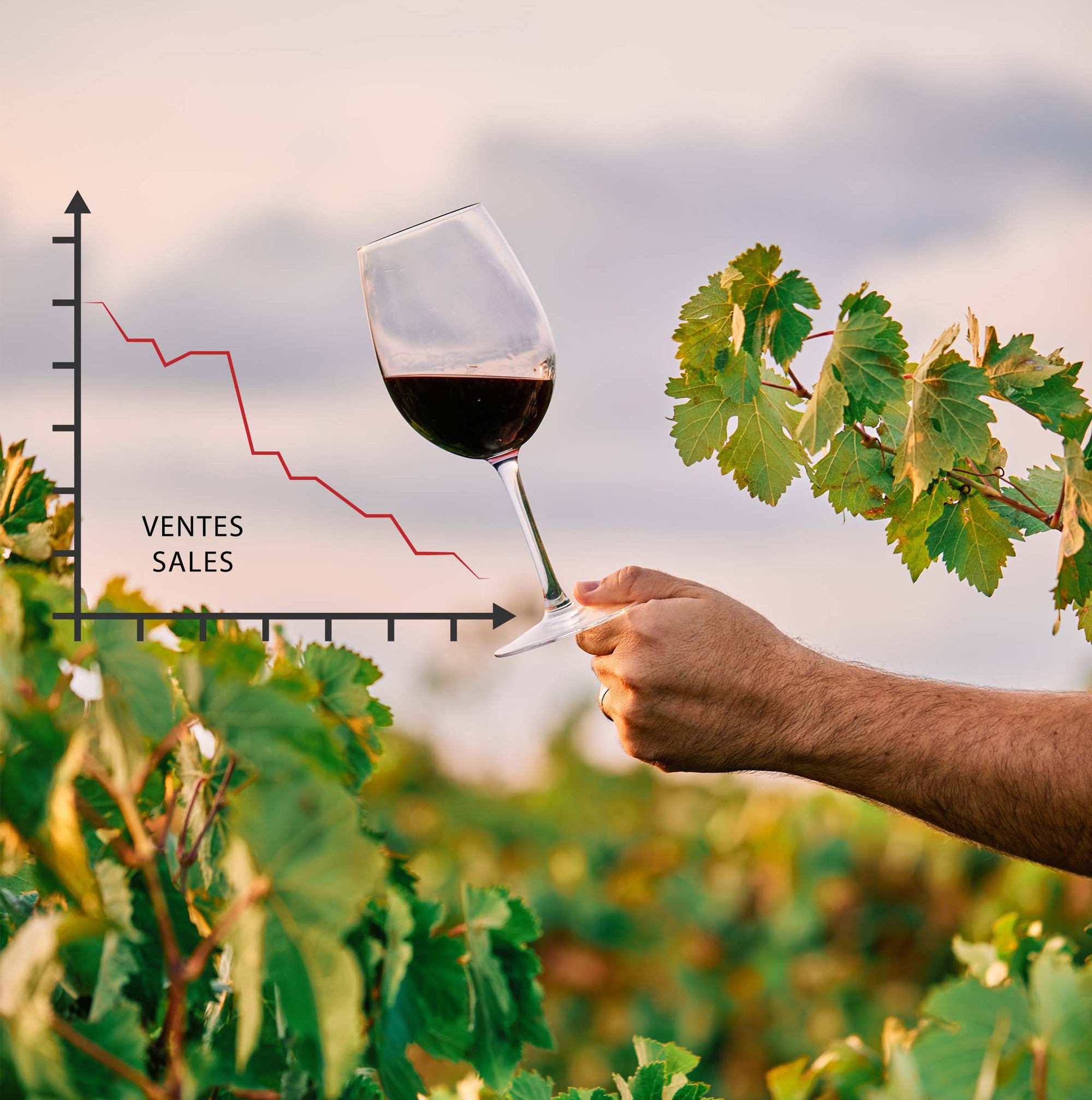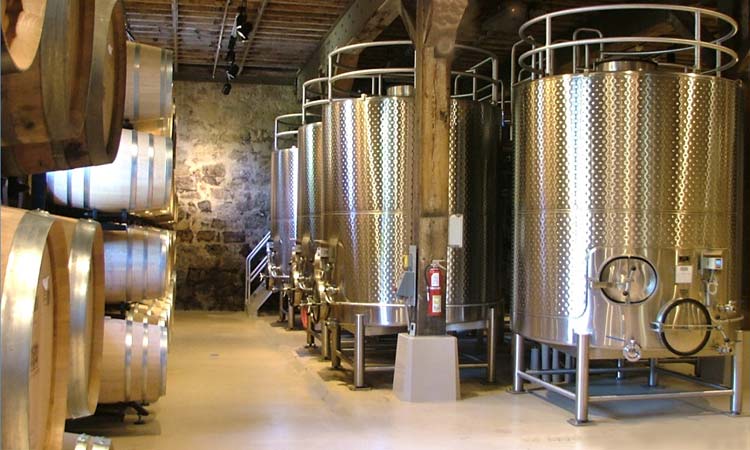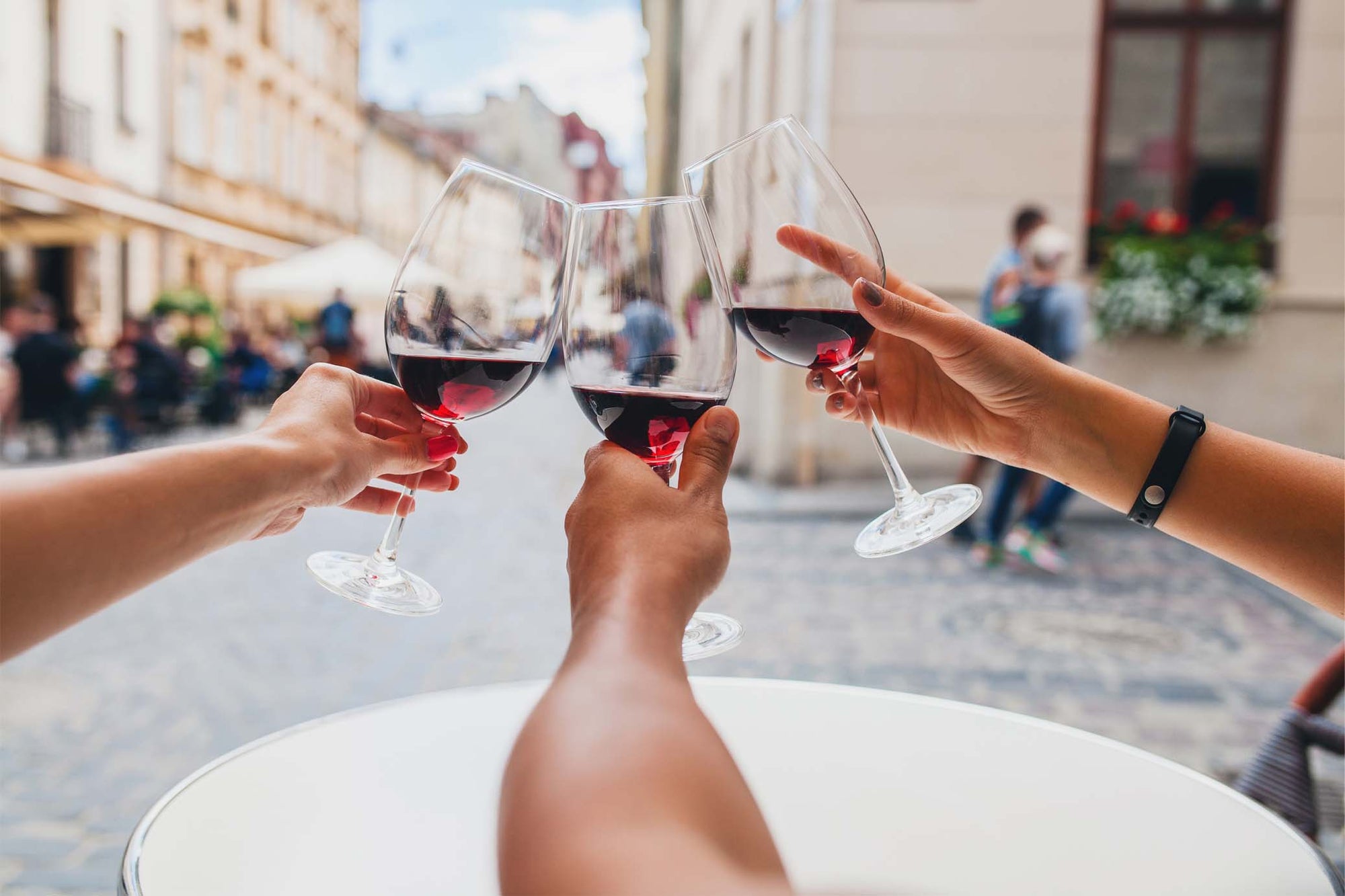

The bitter truth behind Bordeaux AOC: delve into its sad reality!
Discover the well-kept secrets of Bordeaux AOC in this captivating article that will reveal the bitter truth hidden behind this prestigious appellation. Get ready to dive into a troubling reality and question everything you thought you knew about Bordeaux wines. Startling revelations await, unveiling the behind-the-scenes of this iconic wine region and the challenges it faces. Prepare to be surprised, as this exploration will uncover a sad reality that has long been concealed. Are you ready to open your eyes to Bordeaux AOC?
How does production and sales work?
The Bordeaux vineyard, one of the oldest and most prestigious in the world, holds many secrets. To better understand its functioning, we will rely on the imaginary unit of measurement called the "tonneau," representing 900 liters of wine. It is on this basis that we will calculate production and sales costs.
Production
The AOC Bordeaux, which guarantees the quality and taste consistency of the wines in the region, is based on strict specifications.
For red wines, six grape varieties are allowed, offering a range of unique flavors and aromas:
- Merlot
- Cabernet Sauvignon
- Cabernet Franc
- Malbec
- Petit Verdot
- Carmenère
Bordeaux AOC is also distinguished by the diversity of authorized grape varieties for the production of white wines. Eight main varieties are used, each contributing its own aromatic and structural characteristics:
- Sémillon Sauvignon Blanc
- Muscadelle
- Other grape varieties: In addition to the three main grape varieties, white wines from Bordeaux may include other limited quantities of varieties, up to a maximum of 30% of the blend. These complementary grape varieties include White Merlot, Colombard, Mauzac, Ondenc, and Ugni Blanc.
50 hectoliters of wine produced per hectare in 2022.
Furthermore, Bordeaux AOC is subject to strict controls and contributions regulated by the Quali Bordeaux organization.
Quali Bordeaux: Control organization that confirms, through tasting, the market release under Bordeaux appellations. We will later discuss the effectiveness of this organization.
Sales
Bordeaux AOC is based on a trading system, involving transactions between producers and merchants, although winegrowers can sell directly to their customers. Producers are responsible for production while merchants take care of sales.
There are different marketing options for wine through trading.
- The first option is to sell the wine in bulk to the merchant, which means it is transferred from one tank to another. A tanker truck is used to collect the liquid wine and transport it to a bottling location, where it will be bottled individually or blended with other wines.
- Another option is on-site bottling, where the merchant usually takes care of all aspects related to dry materials.
Imagine Bordeaux AOC as a wine exchange, where wine is traded in bulk based on the established tonneau price, representing 900 liters. The average production cost for a 15-hectare estate, producing the maximum authorized volume of 50 hectoliters per hectare, using chemical weed killers, amounts to €1,500 for 900 liters. However, in our case, we prefer a mechanical approach to weed control, resulting in a slightly higher production cost of €2,100.
Selling prices fluctuate based on supply and demand, as they are not regulated by producers or the Égalim law, allowing the sale of our wines below production costs.
Over the past 10 years, the price of the tonneau (900 liters) has exceeded €1,200 twice. These price increases occurred after two catastrophic weather years that led to a decrease in the average production of estates and a decrease in the available volume. Despite this, as production volume decreases, production costs increase, meaning that the selling price always remains lower than production costs.
The low price of the barrel clearly demonstrates the lack of attractiveness of Bordeaux AOC wines to consumers. Several factors contribute to this situation, such as:
- Taste
- Labeling
- Wine promotion
The contributions for Bordeaux AOC wines are managed by the CIVB, the organization governing all Bordeaux AOCs. However, it is interesting to note that 10% of the wines produced in Bordeaux come from major appellations such as Saint-Emilion and Pessac Leognan, which have seen a significant increase in value over the past twenty years. Faced with this reality, as a Bordeaux AOC winemaker, it is legitimate to question the use of contributions, especially when sales figures show a clear disparity, indicating that budgets are concentrated on the major appellations, rendering the sale of popular Bordeaux AOC wines as luxury wines unnecessary. It is important to emphasize that consumers who buy a €50 bottle of wine are seeking a very different taste experience from those who consume a €5 bottle. This consumer confusion contributes to the complexity of Bordeaux wines' image.
Consumers desire new wine profiles, but individuals working for these organizations who do not sell wine impose wines on winemakers where there is no longer a market.
We can identify three problems with this production and distribution model through the trade:
- The lack of direct contact between winemakers and customers prevents a precise understanding of consumer expectations and changes in behavior.
- For the minority of winemakers who sell directly to their customers, a taste is imposed upon them that may not necessarily align with their clientele's expectations.
- Wines undergo standardization and complexity, limiting diversity and authenticity.
For the past two years, the price of the barrel has dropped below €600, reaching such a low level that the CIVB has stopped displaying it. This price decrease has serious consequences for vineyards, which find themselves unable to pay their bills. Unfortunately, despite this critical situation, the organizations governing the AOCs continue to impose contributions on AOC wine producers, adding additional financial pressure.
CIVB: With a brand reputation that has never been lower, Bordeaux vineyards are facing intense Bordeaux bashing, confirming that communication and marketing are not of poor quality but rather pathetic.
In any responsible position in a private company, without the power to impose contributions on customers, one would be dismissed from their position. It is extremely difficult to justify contributions when the problems and needs are not being resolved.
However, in the wonderful world of Bordeaux wine, this is not the case.
Regarding Quali Bordeaux, the question arises about the usefulness of a control organization that imposes verifications to obtain the right to sell a wine under Bordeaux AOC. With a barrel priced at €600, it confirms that the produced wine will be practically "unsellable" through trade. The ability of a winemaker to sell wine in 2023 is already an achievement. How can we justify quality control at a cost of €600 per barrel?
It would be unimaginable for citizens to have to spend money without getting anything in return.
Conclusion
Bordeaux is home too many small producers capable of creating exceptional wines who deserve to regain control over their terroir and winemaking process.
Unfortunately, the new generation of consumers is largely neglected, with different taste preferences from previous generations. The existing specifications make it almost impossible for us to offer them attractive wines in terms of taste. Meanwhile, other beverages such as beer, spirits, and wines from other regions and countries have been able to adapt to new trends. Why can't we do the same?
Worldwide wine consumption is constantly increasing, although volume and value sales of Bordeaux AOC wines are plummeting. This demonstrates that the products do not meet consumer expectations.
However, we cannot rely on the organizations that have contributed to plunging our AOC into this catastrophic situation to get us out of it. Hundreds of centuries-old family estates are being forced to cease their activities.
It is interesting to note that viticulture is regulated by individuals who are incompetent in terms of production and marketing. The numerous crises remind us that all these organizations prioritize their own interests over the winemakers. They impose contributions while winemakers cannot impose objectives on them.
In this regard, perhaps it is time to consider Vin de France as an alternative solution?
be kept informed
Latest articles and offers.
Items
-

The fascinating journey from grape to glass: explore the key stages of wine production!
Have you always wondered how wines are produced? It can sometimes seem clumsy and lack culture to ask this question, although the majority of people do not know it, or have a wrong knowledge. Red wine Winemaking is a fascinating...
-

Passion in the bottle: find out why you can't miss the Vins de France !
Gems for connoisseurs to perfect wines for young consumers. French wine, formerly known as "vin de table" (table wine), is increasingly highlighted for many reasons. Each Appellation d'Origine Contrôlée (AOC) in France has more or less strict specifications. Some regions...
-

The bitter truth behind Bordeaux AOC: delve into its sad reality!
Discover the well-kept secrets of Bordeaux AOC in this captivating article that will reveal the bitter truth hidden behind this prestigious appellation. Get ready to dive into a troubling reality and question everything you thought you knew about Bordeaux wines....
Our wines
Example Product Title
Regular priceUnit price perExample Product Title
Regular priceUnit price perExample Product Title
Regular priceUnit price perExample Product Title
Regular priceUnit price per


